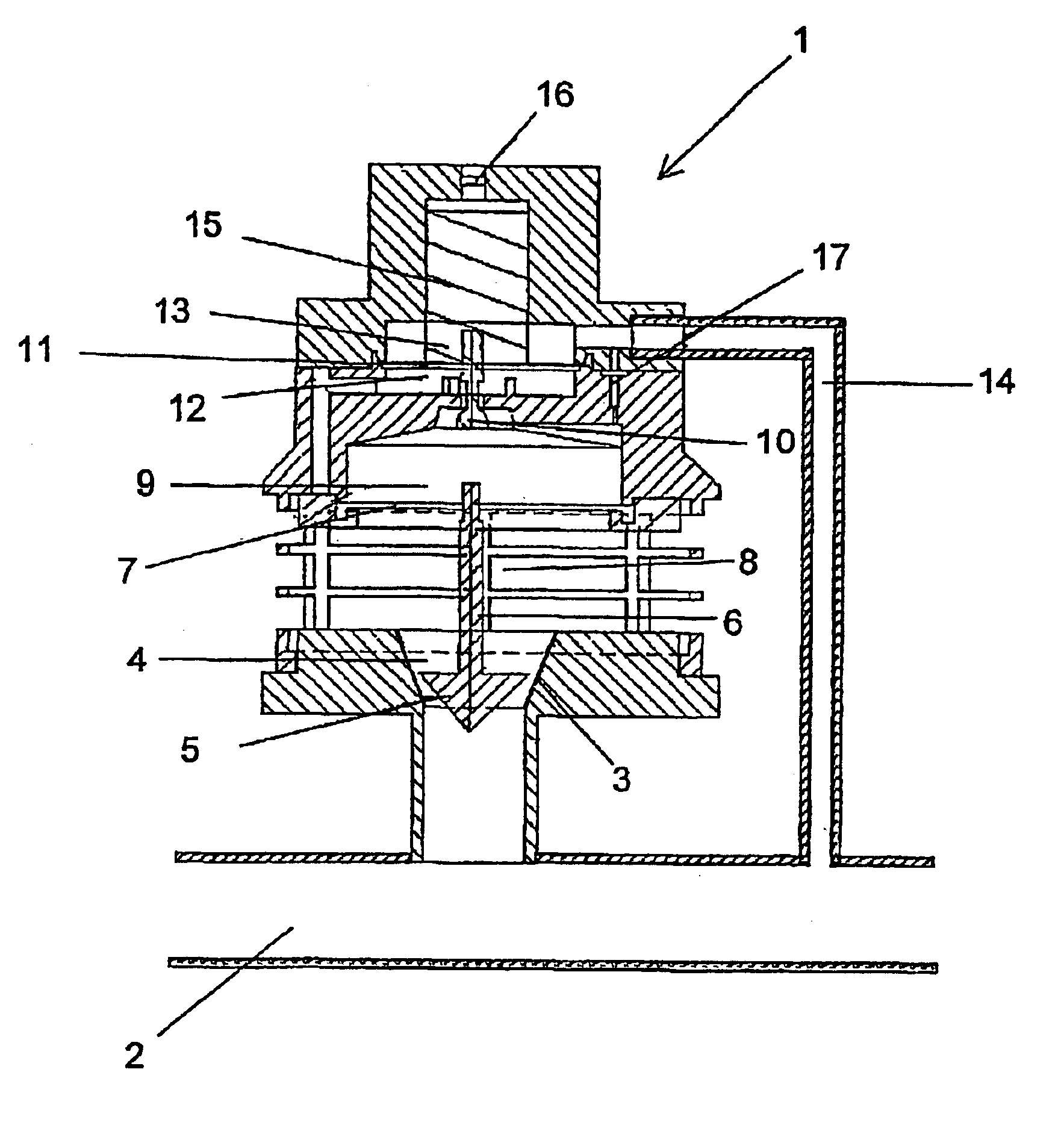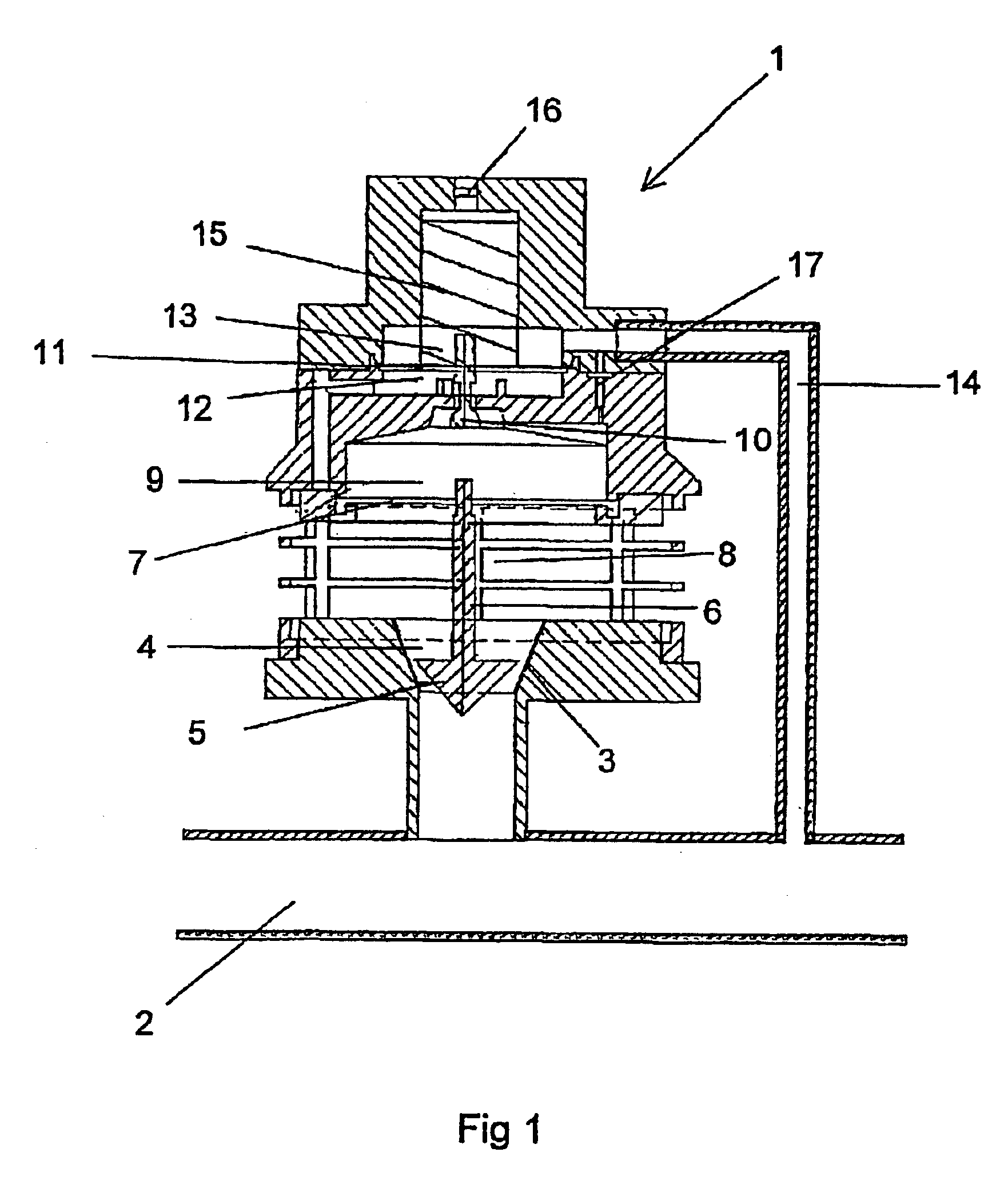Vacuum regulator for maintaining a substantially constant vacuum in a vacuum system
a vacuum system and vacuum regulator technology, applied in the direction of fluid pressure control, process and machine control, instruments, etc., can solve the problems of difficult to establish a stable control of the airflow to the vacuum system, the valve body is opened, and the valve cone is set in a desired arbitrary position with high precision
- Summary
- Abstract
- Description
- Claims
- Application Information
AI Technical Summary
Benefits of technology
Problems solved by technology
Method used
Image
Examples
Embodiment Construction
FIG. 1 shows a vacuum regulator 1. The vacuum regulator 1 is arranged to maintain a substantially constant vacuum level in a vacuum system comprising a vacuum pipe 2. Preferably, the vacuum in the vacuum pipe 2 is used in connection with a milking machine. In such vacuum systems, it is important to maintain a constant vacuum level. In order to remove the air leaking into the vacuum system, a vacuum pump is connected to the vacuum system. Such a vacuum pump must have capacity to maintain a higher vacuum in the vacuum system than the desired vacuum level The vacuum regulator 1 is connected to the vacuum system in order to supply air to the vacuum pipe 2 in such a quantity that the vacuum in the vacuum pipe 2 is maintained at the desired vacuum level.
The vacuum regulator 1 comprises a main valve arranged to control the supply of air to the vacuum pipe 2. The main valve comprises a valve seat 3, having a surface defining a tapering hole 4 arranged to lead air to the vacuum pipe 2, and a...
PUM
 Login to View More
Login to View More Abstract
Description
Claims
Application Information
 Login to View More
Login to View More - R&D
- Intellectual Property
- Life Sciences
- Materials
- Tech Scout
- Unparalleled Data Quality
- Higher Quality Content
- 60% Fewer Hallucinations
Browse by: Latest US Patents, China's latest patents, Technical Efficacy Thesaurus, Application Domain, Technology Topic, Popular Technical Reports.
© 2025 PatSnap. All rights reserved.Legal|Privacy policy|Modern Slavery Act Transparency Statement|Sitemap|About US| Contact US: help@patsnap.com



